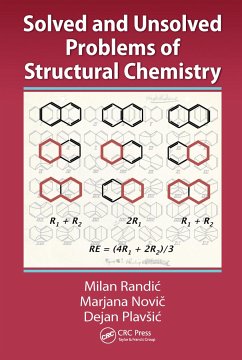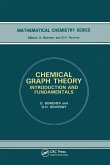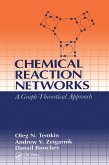Solved and Unsolved Problems of Structural Chemistry introduces new methods and approaches for solving problems related to molecular structure. It includes numerous subjects such as aromaticity-one of the central themes of chemistry-and topics from bioinformatics such as graphical and numerical characterization of DNA, proteins, and proteomes. It also outlines the construction of novel tools using techniques from discrete mathematics, particularly graph theory, which allowed problems to be solved that many had considered unsolvable.
The book discusses a number of important problems in chemistry that have not been fully understood or fully appreciated, such as the notion of aromaticity and conjugated circuits, the generalized Hückel 4n + 2 Rule, and the nature of quantitative structure-property-activity relationships (QSARs), which have resulted in only partially solved problems and approximated solutions that are inadequate. It also describes advantages of mathematicaldescriptors in QSAR, including their use in screening combinatorial libraries to search for structures with high similarity to the target compounds.
Selected problems that this book addresses include:
Multiple regression analysis (MRA)Insufficient use of partial ordering in chemistryThe role of Kekulé valence structuresThe problem of protein and DNA alignment
Solved and Unsolved Problems of Structural Chemistry collects results that were once scattered in scientific literature into a thoughtful and compact volume. It sheds light on numerous problems in chemistry, including ones that appeared to have been solved but were actually only partially solved. Most importantly, it shows more complete solutions as well as methods and approaches that can lead to actualization of further solutions to problems in chemistry.
The book discusses a number of important problems in chemistry that have not been fully understood or fully appreciated, such as the notion of aromaticity and conjugated circuits, the generalized Hückel 4n + 2 Rule, and the nature of quantitative structure-property-activity relationships (QSARs), which have resulted in only partially solved problems and approximated solutions that are inadequate. It also describes advantages of mathematicaldescriptors in QSAR, including their use in screening combinatorial libraries to search for structures with high similarity to the target compounds.
Selected problems that this book addresses include:
Multiple regression analysis (MRA)Insufficient use of partial ordering in chemistryThe role of Kekulé valence structuresThe problem of protein and DNA alignment
Solved and Unsolved Problems of Structural Chemistry collects results that were once scattered in scientific literature into a thoughtful and compact volume. It sheds light on numerous problems in chemistry, including ones that appeared to have been solved but were actually only partially solved. Most importantly, it shows more complete solutions as well as methods and approaches that can lead to actualization of further solutions to problems in chemistry.
"Already in the Preface (on page XIII) the authors declare that their book is 'unusual and unconventional'. Indeed it is! Contrary to many other existing monographs concerned with chemical graph theory or its selected special topics, this book is full of interesting, unusual, and surprising excursions, making its reading a great pleasure. Everywhere in the book, we find historical details and anecdotes, related to physics, chemistry, physical chemistry, and mathematics, often coming from Milan Randic's personal experience. Colleagues interested in philosophy of science (or philosophy in general) will also find a wealth of intriguing ideas. For these colleagues we especially recommend Chapter 14, and its sections 'On Beauty in Science' and 'Sleeping Giants'. The same chapter will be a gold mine for scholars interested in the history of chemistry . . .
In summary, 'Solved and Unsolved Problems of Structural Chemistry' is a valuable treatise, outlining practically all facets of the research of Milan Randic in various areas of chemical graph theory. ... this book should be a valuable item in the personal library of all those who ever did any work or ever had any interest in chemical graph theory."
- Ivan Gutman, Match: Communications in Mathematical and in Computer Chemistry, 2016.
"The book is foremost readable, copiously and suitably illustrated, and set out in a logical manner... I would recommend this book to someone interested in chemical graph theory with any level of knowledge of physical chemistry."
- Colin F. Poole for Chromatographia (2016) 79:1049-1050. DOI 10.1007/s10337-016-3110-4.
"Along 14 chapters and a large number of appendices (23!),the volume quite well printed by CRC Press essentially develops the problems related with the connection of graph theory with molecular structure and chemistry. [...] The book is interesting enough to be worth reading and alternatively constitutes quite an important consulting tool."
- Ramon Carbó-Dorca for Journal of Computational Chemistry (2019)
In summary, 'Solved and Unsolved Problems of Structural Chemistry' is a valuable treatise, outlining practically all facets of the research of Milan Randic in various areas of chemical graph theory. ... this book should be a valuable item in the personal library of all those who ever did any work or ever had any interest in chemical graph theory."
- Ivan Gutman, Match: Communications in Mathematical and in Computer Chemistry, 2016.
"The book is foremost readable, copiously and suitably illustrated, and set out in a logical manner... I would recommend this book to someone interested in chemical graph theory with any level of knowledge of physical chemistry."
- Colin F. Poole for Chromatographia (2016) 79:1049-1050. DOI 10.1007/s10337-016-3110-4.
"Along 14 chapters and a large number of appendices (23!),the volume quite well printed by CRC Press essentially develops the problems related with the connection of graph theory with molecular structure and chemistry. [...] The book is interesting enough to be worth reading and alternatively constitutes quite an important consulting tool."
- Ramon Carbó-Dorca for Journal of Computational Chemistry (2019)

